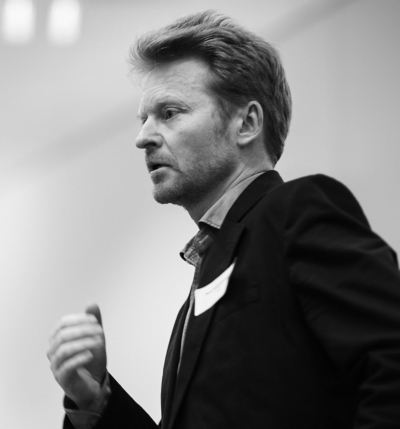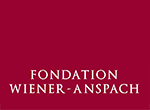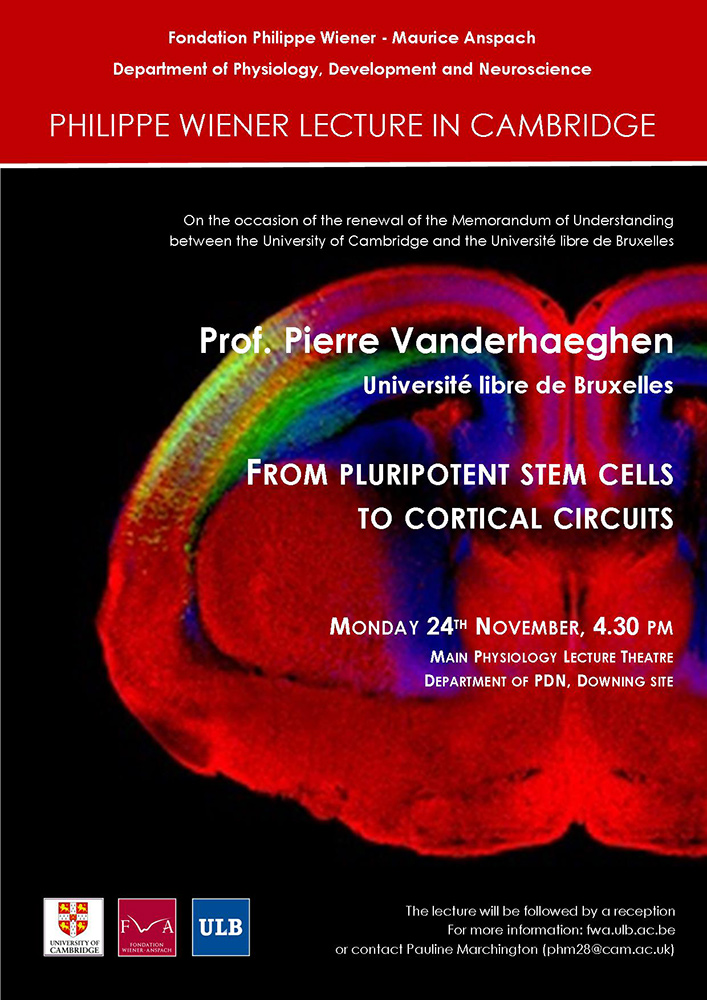Leçon Cambridge 2014 – 2015

Le lundi 24 novembre le Professeur Pierre Vanderhaeghen a donné une Philippe Wiener Lecture intitulée « From pluripotent stem cells to cortical circuits » à l’Université de Cambridge. Il a été accueilli par le Professeur Ole Paulsen, du Department of Physiology, Development and Neuroscience. A cette occasion, le Memorandum of Understanding entre l’Université libre de Bruxelles et l’Université de Cambridge, signé en 2009, a été renouvelé.
Abstract
The cerebral cortex consists of several hundreds of different types of neurons, organized into specific cortical layers and areas, that display specific profiles of gene expression, morphology, excitability and connectivity.
Embryonic (ES) and induced (IPS) pluripotent stem cells constitute a promising tool for the modelling and treatment of human neural diseases. We previously discovered an intrinsic pathway by which pluripotent stem cells, whether of mouse or human origin, recapitulate in vitro the major milestones of cortical development, leading to the sequential generation of a diverse repertoire of neurons that display most salient features of genuine cortical neurons.
When transplanted into the cerebral cortex of newborn mice, ESC-derived cortical neurons develop specific patterns of axonal and dendritic projections corresponding to endogenous cortical projections in vivo. Following transplantation into lesioned adult mouse cortex, the grafted neurons also establish robust and specific long range projections and synapses corresponding to the damaged cortical circuits.
Corticogenesis from pluripotent stem cells constitutes an innovative tool to study cortical development, evolution, and disease, and could lead to the rational design of brain repair strategies.



